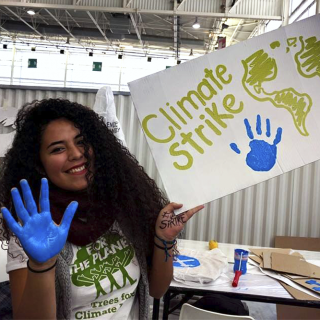As a child, whenever Maria Fujihara’s friends asked her what her parents did, she would say, “They are gangsters.” But by “gangsters” she meant her father was director of IBAMA (Brazilian Institute of Environment and Renewable Natural Resources) and her mother was the manager of Burle Marx Park, a green strip in the middle of the city of São Paulo.
In this home, Maria grew up dealing with her contradictions. She liked the environment because of her parents’ professions, but she also enjoyed travelling and was interested in the arts, culture and humanities. She started studying Economics because she wanted to be a diplomat to be able to travel the world, but once she was in college a car accident put everything on hold for a year. “It was a turning point, when I decided to drop everything and embrace my passion for architecture,” she explained.
After she recovered from the accident, Maria went to study Architecture, where she realised that none of the teachers or courses talked about sustainability. “The Academy is always the last place to change, the last to embrace any innovation,” she laments. But with the environment in her DNA, she wouldn’t rest until a professor recommended her to the Green Building Council Brazil (GBC), an organization that offers environmental certification for the construction industry, where Maria got her first job as an architect.
More specifically, Maria worked in promoting the LEED certificate, an acronym for “Leadership Energy Environmental Design,” considered the world’s largest building certification. With a spark in her eyes and full of passion, Maria criss-crossed the country and travelled the world promoting more sustainable ways to make buildings, homes, condos and neighborhoods. “The way we build in Brazil is very dirty, there is a lot of waste,” she explains. “Non-sustainable buildings cost an average of 15% more just because of waste.”
When asked if a more sustainable model is more expensive, she argues otherwise. “With certification, planning takes longer but construction is faster. So the cost is diluted during the work.” She shows some practical examples of projects she has followed, where proper management of demolition waste, for example, can reduce water consumption by up to 60% and energy by up to 40%. “The construction industry uses lots of natural resources. Without a good plan, there is a lot of waste, it’s like you’re polluting twice”.
Maria was involved in a neighborhood certification project that eventually led her to fall in love with urbanism and enroll in a postgraduate program in City Planning and City Management at the University of São Paulo. On a personal level, she talks about how her work directly influences her lifestyle. “I stopped eating meat, I share rides, I buy from local producers, I swap my clothes in bazars to avoid buying new ones, and my house looks like a forest.”
Maria strongly defends that her lifestyle cannot run against what she aspires to in her work. “Our parents’ generation is the one that first started talking about and studying the environment, but they didn’t put this into practice. We are the generation that will apply what we study, and we won’t accept a life filled with contradictions anymore.”
This content is part of the “Ela é quente” project, created by Evelyn Araripe, a journalist and environmental educator, and shared by her with Believe.Earth. The story presents inspiring stories about women from around the world who are engaged in the fight against climate change.
Published on 07/15/2019




